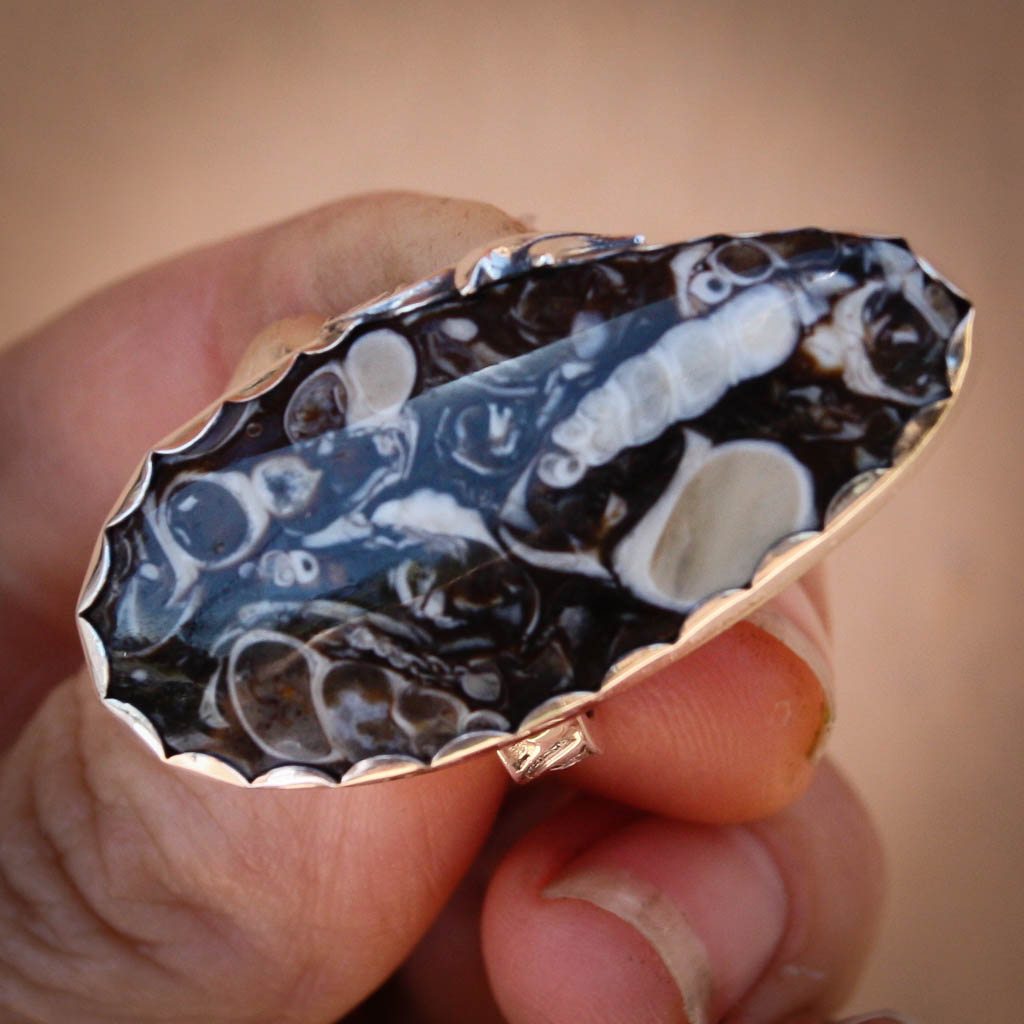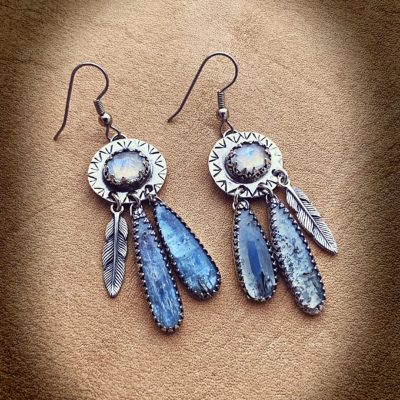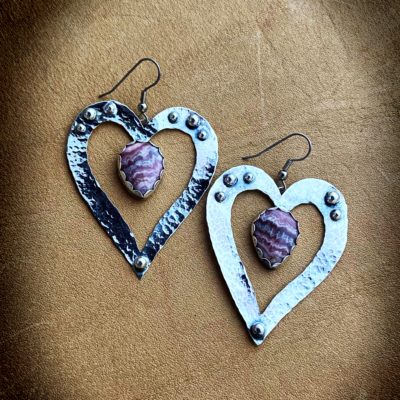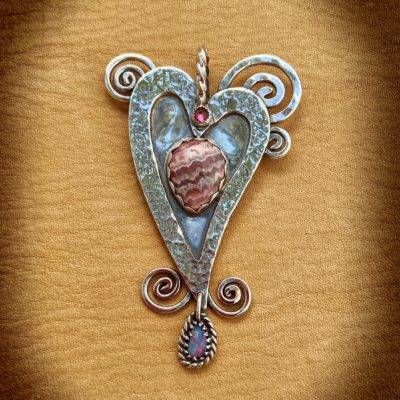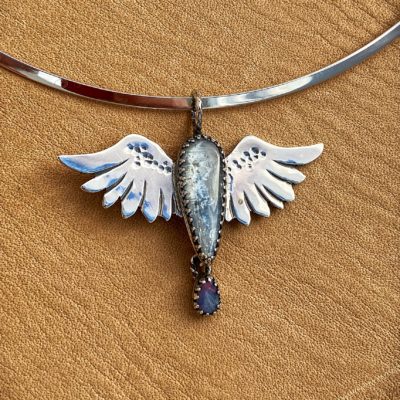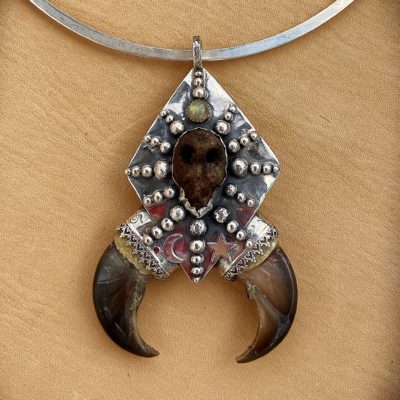As you can see by the impressive ring pictured here, conglomerate is a unique and fascinating stone.
As a gemstone, conglomerate is quite rare.
It is not used much in handcrafted jewelry.
If you take a closer look at this piece, you’ll probably wonder why.
Its stunning shapes and patterns were formed thousands of years ago, and yet polished and set in sterling silver, conglomerate looks bright and modern.
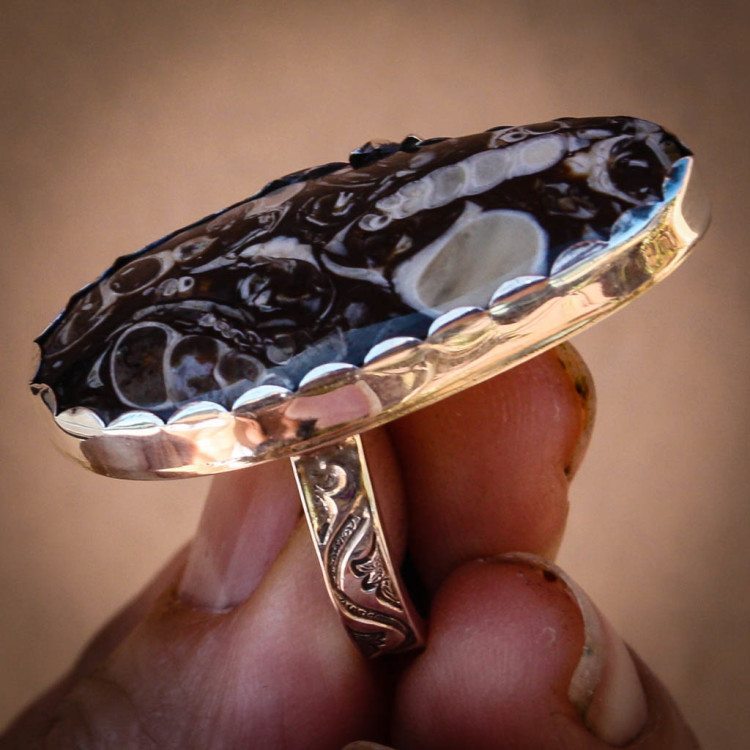
Conglomerate: it’s beauty is dramatic.
What is conglomerate?
Conglomerate is a type of sedimentary rock which is formed by clasts.
Clasts are smaller rocks and particles which are bound together by other smaller rocks and chemicals, such as sand, mud and a naturally occurring cement.
It can contain quartz, sedimentary, metamorphic or igneous rock.
Conglomerate is formed when sand and other smaller particles sift between the larger clasts.
Over time, these build up and actually set.
Naturally occurring conglomerate actually looks like rough set concrete.
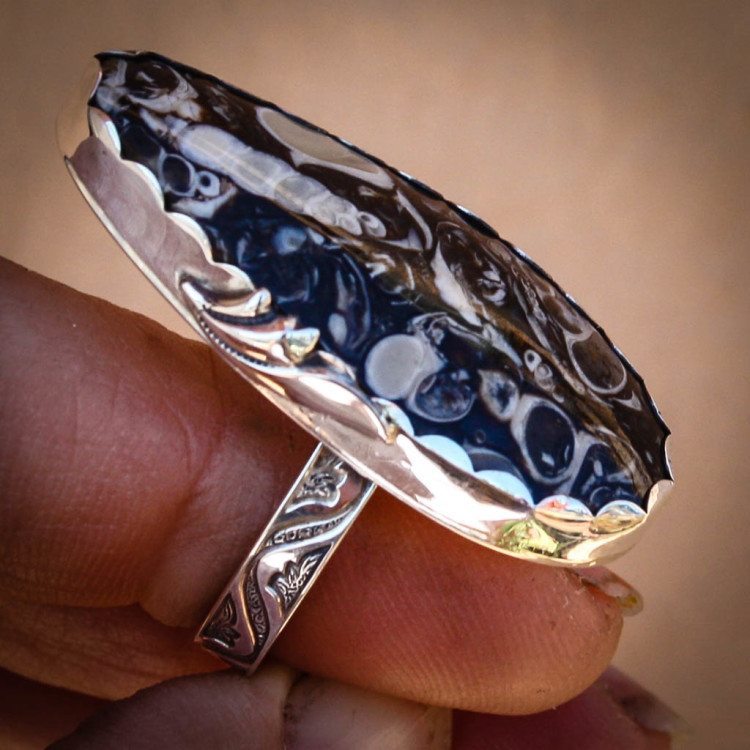
Note the intricate sterling silver craftsmanship.
How is conglomerate formed?
The clasts take on their round form from being tumbled by running water or by waves for thousands of years.
This explains why conglomerate stones are normally found in or near river beds or along rocky shorelines.
Perhaps it is this process which appeals to the creative jewelry maker.
Wearing a piece which contains a conglomerate will connect you with a time when the Earth was very young.
Within its clasts, this stone carries the memories of Mother Earth herself. Her latent energies are emitted down through the ages.
Conglomerate is a stone which represents timelessness and change.
Wearing it will be a symbol that you are not flighty or temporal.
Instead, it is a sign you not only appreciate things of great beauty, but hold steadfast to true essence of the Earth itself.
Stare into the depths of this stone, and you’ll feel the energies of prehistoric times; shadows of ancient shells and creatures of the deep.

